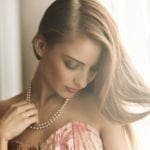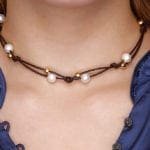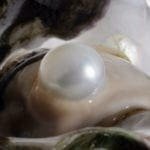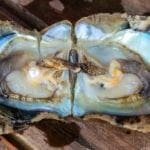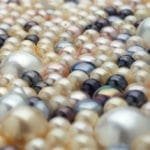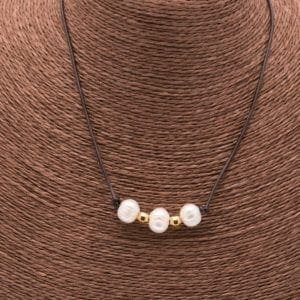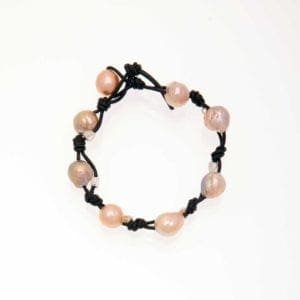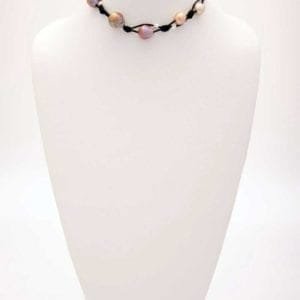“A woman needs ropes and ropes of pearls” – Coco Chanel.
From Queen Elizabeth to Audrey Hepburn, next to diamonds, pearls are quickly becoming a woman’s ‘new’ best friend. Always classic, iconic and appropriate, according to Jackie Kennedy, pearls compliment a wide range of attire. But pearls today come in a variety of different types and styles, and if you’re looking to spend a bit, you need to know a little about the types of pearls available to make a selection that works for you.
Mussels vs. Oysters; Saltwater Pearls vs. Freshwater Pearls

Freshwater Pearls in a Mussel 
Saltwater Pearls in an Oyster
What do mussels and oysters have to do with pearl cultivation? Well, mussels are used to culture natural freshwater pearls and oysters are used for natural and cultured saltwater pearls. Freshwater pearls grow irregular, lumpy and look as nature intended them to look. No larger than 7mm in size, freshwater pearls also have a baroque shape. Now, freshwater pearls can be round, but it’s rare, and therefore, more expensive. Freshwater pearls can be cultured in both ponds and lakes, and the leading source of cultured pearls in today’s market is China and the US.
Saltwater pearls have a different classification based on the type of oyster and its location. Saltwater pearls can be found naturally in the wild from oysters or cultivated on a farm. Whether your preference is freshwater or saltwater, the most valuable pearls are those that occur spontaneously in nature because of its rare occurrence.
Saltwater pearls can be found naturally off the northern coast of Australia and the surrounding seas of Indonesia. However, Philippines, Australia and Indonesia have become the leading source for south sea pearl cultivation (farms) from saltwater pearl oysters. Here is a quick list of pearls found in the South Seas:
South Sea White Pearls

South Sea white pearls are naturally located off the shores of Burma, Okinawa, Indonesia, and Australia and are grown by silver-lipped oysters. These pearls are quite large at 9 mm and have a lustrous look in a creamy white or silver hue. Some pearls may even have a rosy glow. Pearl shapes could be round, oval, teardrop or baroque. South Sea pearls are nucleated by using a perfectly round mother-of-pearl nucleus which is
South Sea Gold Pearls
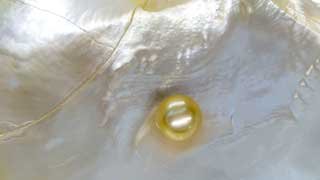
South sea gold pearls are found only in gold-lipped oysters in tropical areas including off the shore of Tahiti. Valued for their golden hue, they are extremely rare and large starting at 9mm in size. The gold tones can range from a silky sunburst to a light Dom Pérignon. This oyster can also produce white and cream pearls and their shapes come in oval, round, baroque and teardrop.
Tahitian Pearls

Tahitian pearls also called black South Sea pearls, are naturally found in black-lipped oysters called
Akoya Cultured Pearls
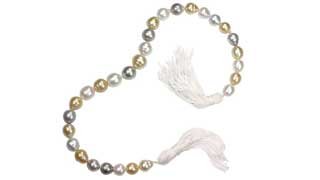
Another popular type of pearl is saltwater Akoya cultured pearls from Japan and China. Akoya pearls come in many colors including cream, a soft green
Cortez Pearls
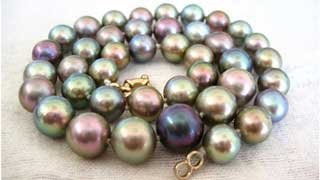
Cortez pearls, named after the Spanish conquistador, Hernán Cortés, whose expedition in 1535 to the Baja California Peninsula expedited his search for the ‘Sea of Pearls’ known today as the Gulf of California. These ‘New World’ black pearls fished from these same waters had pearl divers calling the area the ‘Vermillion Sea of Cortez.’ Cortez pearls are produced naturally from two species of oysters that live along the Pacific coast, the ‘Panamic black-lipped oyster’ or ‘madreperia’ and the ‘rainbow-lipped oyster or ‘Concha Nacar.’ The latter produces such vivid and unusual hues with its unique iridescence that it’s highly distinguishable among all the other pearls in existence.
By 1939, Cortez pearls nearly became extinct because of their high demand. To save what pearl oysters were left, a ban on fishing Cortez pearls put an end to 400 years of constant fishing for the black pearl on the Gulf of California. Today, these cultured pearls are produced in Bacochibampo Bay, Sonora and Guaymas in Mexico on the Gulf of California. It takes a full four years to produce a Cortez pearl in a cultured production environment. The culturing of Cortez pearls is proprietary and is known only to the University research team who were the original architects of the
Basically, an adult rainbow-lipped oyster or Pteria sterna is seeded with an American freshwater shell nucleus ranging in size from 6.5 to 10.0 mm with a tiny bit of mantle tissue from an oyster donor. Not to be outdone in the color department, rainbow-lipped oysters produce a wide array of Cortez pearls in nacre color and orient. It’s not unusual to see body colors of both cool and warm hues in bronze, black, white, grey and silver with several iridescent overtones in gold, violet, green and blue. Cortez pearls range in size from 8.0 to 14.0 mm in diameter with baroque shapes making up to 71 percent of the harvest.
Rounds and off-rounds make up only 3 percent. In a world where pearls can be dyed, ‘reworked’ or sanded to appear more expensive than they actually are; Cortez pearls are untreated. After a 2-year culture period, nacre thickness can be a minimum of 0.8 or up to 2.3 mm.
Conch Pearls

Conch pearls (pronounced ‘konk’) while beautiful and rare, are actually not real pearls at all. Produced by the Queen Conch (Strombus gigas), these small, oval or baroque-style pearls have a flame-like pattern in its structure of calcium carbonate


